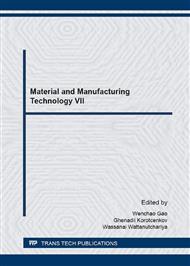p.81
p.87
p.92
p.97
p.103
p.109
p.114
p.118
p.123
Electrical Properties of BNKTZ Ceramics as a Function of Calcination Temperature
Abstract:
In this research, the Bi0.5(Na0.80K0.20)0.5Ti0.99Ti0.10O3 were prepared via a conventional solid-state reaction method, and their properties were related with calcination temperature. The crystalline structure of BNKTZ ceramics was assessed by X-ray diffraction (XRD) method. Other physical properties, i.e. porosity, density, microstructure, and electrical properties were determined. XRD patterns for all samples showed a pure perovskite, where coexistence between rhombohedral and tetragonal phases was observed for some conditions. The optimum dielectric constant was obtained for the ceramic calcined at 800 °C. The ferroelectric and piezoelectric properties were improved and showed the highest values for the calcination temperature around 900-1000°C. The improvements of ferroelectric and piezoelectric properties were proposed to be due to the ceramics had compositions closed to MPB composition. Furthermore, density also had a contribution for the improvements.
Info:
Periodical:
Pages:
103-108
Citation:
Online since:
September 2016
Keywords:
Price:
Сopyright:
© 2016 Trans Tech Publications Ltd. All Rights Reserved
Share:
Citation:


